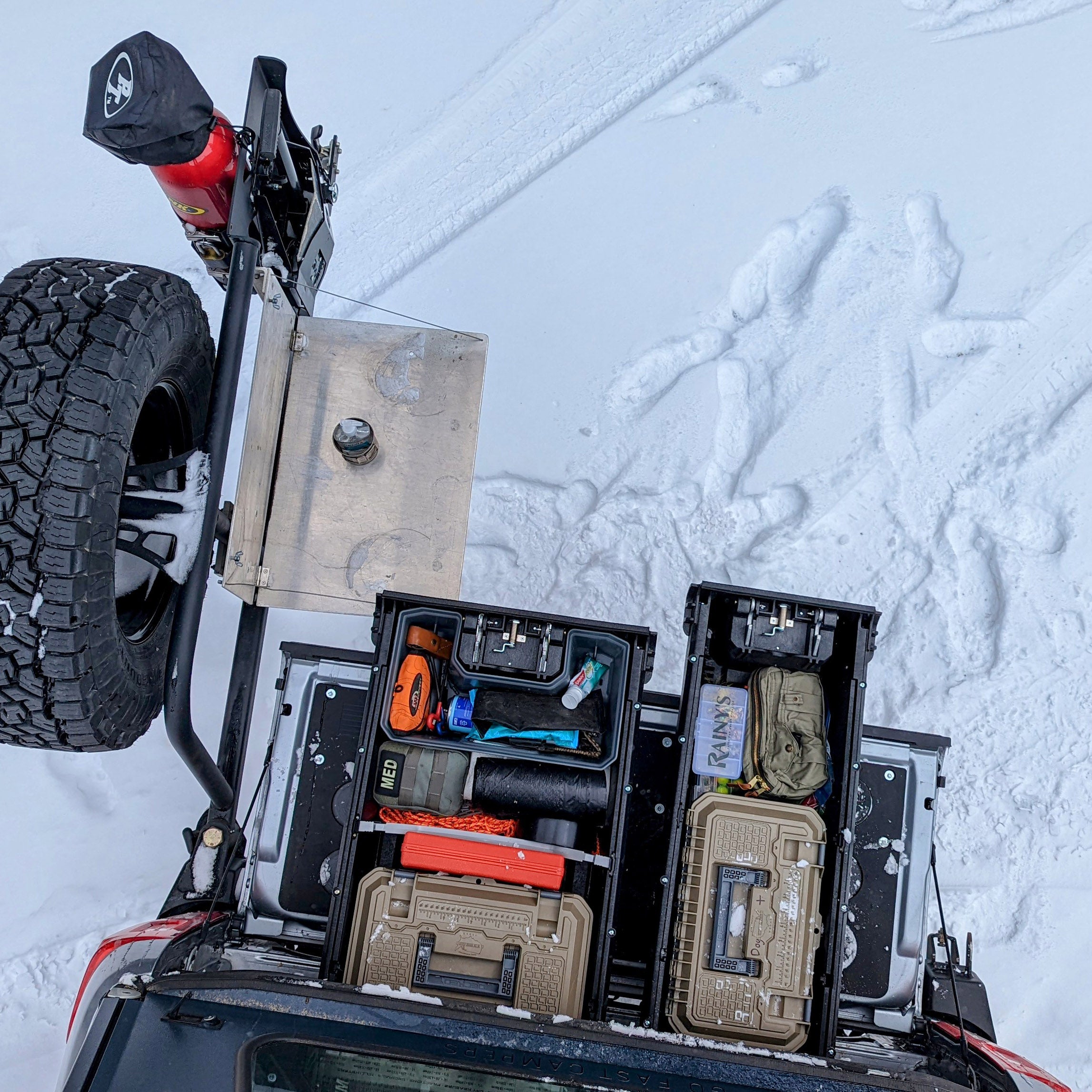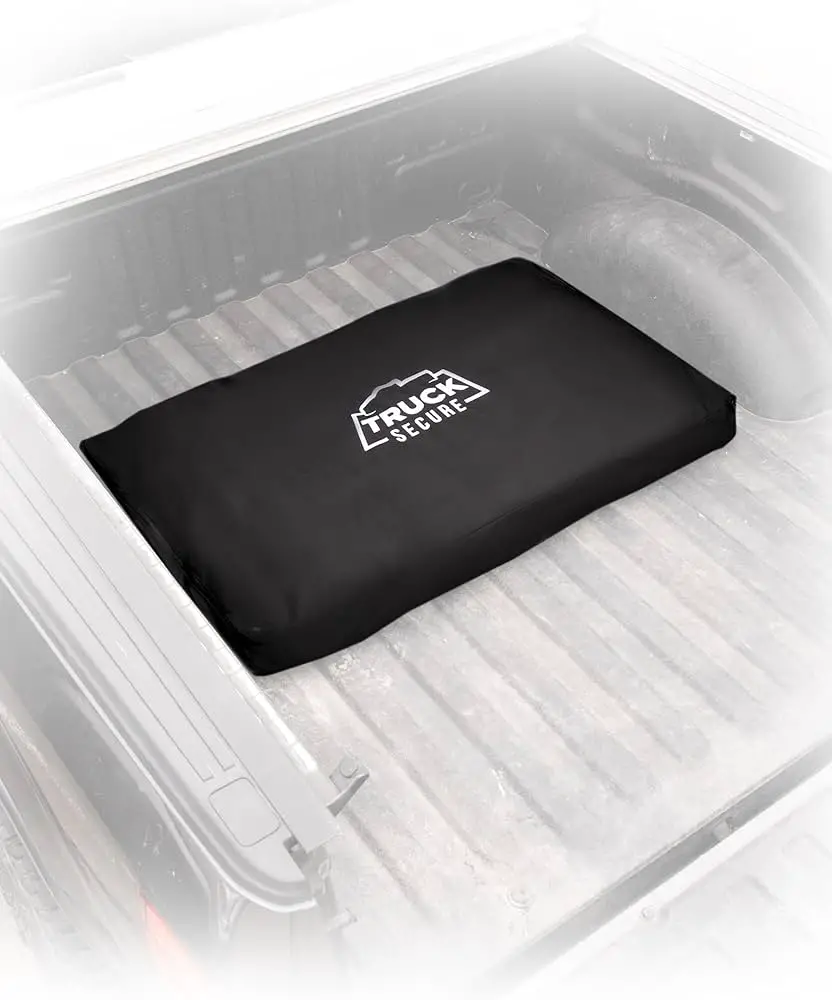During winter, adding weight to your truck bed can improve traction and stability on icy roads. The additional weight helps to prevent slippage and improves the vehicle’s overall handling in winter conditions.
Properly distributed weight can make driving safer and more manageable, especially in areas prone to heavy snow and ice. As the temperature drops and snow begins to fall, it’s essential to consider how to prepare your truck for the winter weather.
One crucial aspect to address is the addition of weight to the truck bed. By understanding the significance of truck bed weight for winter and how it enhances safety and performance, you can make informed decisions to ensure your vehicle is equipped for the challenges of wintertime driving. We’ll delve into the importance of adding weight to your truck bed during the winter season, examining the benefits it provides and offering practical tips for doing so effectively. Understanding the role of truck bed weight in wintertime driving can contribute to a safer and more secure driving experience for truck owners.
Why You Need To Boost Your Truck Bed Weight
Winter brings challenging driving conditions, especially when it comes to navigating snowy and icy roads. To ensure safety and stability, boosting your truck bed weight is essential. Adding weight to your truck bed can significantly improve traction, stability, and control, making it easier to handle the challenges of winter driving. Below, we will explore the reasons why boosting your truck bed weight is crucial for the winter season.
Improving Traction On Snowy Roads
Increased weight in your truck bed can enhance traction on snowy and icy roads. When driving in winter conditions, tires can easily lose grip, leading to skidding or sliding. By adding weight to your truck bed, you increase the downward force on the rear wheels, providing better traction and minimizing the risk of slipping on slippery surfaces. The additional weight helps the tires maintain contact with the road, improving overall traction and reducing the likelihood of accidents.
Better Stability And Control
Boosting your truck bed weight provides better stability and control when driving in winter weather. The added weight helps to counterbalance the rear of the vehicle, making it less prone to swaying or fishtailing on slippery roads. This results in improved handling and responsiveness, allowing you to maintain better control of your truck. With enhanced stability, you can maneuver more confidently, reducing the chances of losing control in challenging winter driving conditions.

Credit: www.ford-trucks.com
Choosing The Right Weight For Your Truck
Understanding Your Truck’s Weight Capacity
Before determining the ideal weight for your truck bed during winter, it’s crucial to understand your truck’s weight capacity. Refer to your vehicle’s manual or contact the manufacturer to find the maximum allowable weight. Exceeding this limit can lead to safety hazards and potential damage to your vehicle.
Determining The Optimal Weight For Winter
When preparing your truck for winter, it’s essential to consider the added weight from snow, ice, and winter gear. Factor in the weight of chains, salt, plows, and any other equipment. Consider the impact of the added weight on your vehicle’s handling and braking. Consult your mechanic for assistance in determining the optimal weight specific to your truck’s model and the conditions you’ll be facing.
Essential Accessories For Increasing Truck Bed Weight
When it comes to winter driving, having a well-balanced and properly weighted truck bed is crucial to ensure stability and traction on slippery roads. In this blog post, we will discuss the essential accessories that can help you increase the weight of your truck bed, making it safer and more reliable for winter conditions.
Investing In Weighted Truck Bed Mats
If you’re looking for a simple and effective solution to increase the weight of your truck bed, investing in weighted truck bed mats is a great option. These mats are specifically designed to add extra weight, providing better traction and stability in icy or snowy conditions.
Weighted truck bed mats are typically made of durable rubber materials and are available in various sizes to fit different truck models. They are designed to distribute weight evenly across the bed, preventing it from shifting during transport. Furthermore, these mats are easy to install and remove, allowing you to adjust the weight as needed.
By adding a weighted truck bed mat, you can ensure better tire grip on icy roads and reduce the chances of skidding or losing control of your vehicle.
Using Sandbags Or Concrete Blocks
If you’re looking for a more DIY approach, using sandbags or concrete blocks can also be an effective way to increase the weight of your truck bed. Simply place sandbags or concrete blocks evenly across the bed, ensuring they are secure and won’t shift during travel.
Note: When using sandbags or concrete blocks, it’s important to properly secure them to avoid any hazards on the road. Make sure they are tightly tied or anchored to prevent them from moving around, which could potentially damage your truck or cause accidents.
Using sandbags or concrete blocks not only adds extra weight to your truck bed but also provides additional stability when driving on icy or slippery roads. These materials are readily available and cost-effective options to increase your truck’s traction and ensure a safer journey during winter seasons.
Securing Your Truck Bed Weight Properly
It’s important to secure the weight in your truck bed properly, especially during the winter months. This ensures the safety of yourself, your cargo, and other drivers on the road. In this blog post, we will discuss the two key aspects of securing your truck bed weight: using ratchet straps or tie-downs and ensuring even distribution of weight.
Using Ratchet Straps Or Tie-downs
One of the most effective ways to secure your truck bed weight is by using ratchet straps or tie-downs. These tools help keep your cargo in place, preventing any movement or shifting during transit. To properly secure your truck bed weight with ratchet straps or tie-downs, follow these steps:
- Place the cargo in your truck bed, ensuring it is evenly distributed.
- Attach one end of the strap or tie-down to a secure anchor point in your truck bed.
- Loop the strap or tie-down over your cargo, making sure it is snug.
- Attach the other end of the strap or tie-down to another secure anchor point.
- Use the ratchet mechanism (for ratchet straps) or tighten the tie-down to secure the cargo firmly.
By using ratchet straps or tie-downs, you can confidently transport your truck bed weight without the worry of it shifting or falling off during the winter season.
Ensuring Even Distribution Of Weight
Another crucial aspect of securing your truck bed weight is ensuring even distribution. When weight is unevenly distributed, it can affect your truck’s stability and handling, particularly on slippery winter roads. Here are some tips to ensure even distribution of weight:
- Place the heaviest items in the center of your truck bed, balancing the weight on both sides.
- Arrange the remaining cargo around the heaviest items, distributing the weight evenly.
- Avoid stacking items too high, as this can increase the chances of instability.
- Consider using a bed liner or cargo net to prevent items from sliding or shifting.
By evenly distributing the weight in your truck bed, you enhance the overall stability and handling of your vehicle, minimizing the risks associated with carrying heavy loads in winter conditions.
Safety Considerations When Increasing Truck Bed Weight
When increasing truck bed weight for winter, safety is paramount. Ensure the suspension can handle the added load, and use quality snow tires for improved traction. Adjusting tire pressure and driving cautiously on icy roads can also help maintain safety and control.
When preparing your truck for winter, it’s important to consider the safety implications of increasing the weight in your truck bed. Adding weight to your truck can enhance traction and stability, but there are a few key considerations to keep in mind before you load up.
Avoiding Overloading And Damaging Your Truck
To protect yourself and your vehicle, it’s vital to avoid overloading your truck bed. Overloading can lead to serious accidents and even damage your truck’s suspension system. Here are a few tips to help you avoid overloading and protect your truck:
- Know your truck’s weight capacity – consult your owner’s manual or contact the manufacturer to determine the maximum payload for your specific model.
- Weigh your cargo – use a scale to ensure you stay within your truck’s weight limits. Distribute the load evenly to prevent excessive strain on one side of the truck.
- Consider your truck’s Gross Vehicle Weight Rating (GVWR) – this rating indicates the maximum allowable weight of your fully loaded truck, including passengers and cargo.
- Utilize additional storage options – if you frequently carry heavy loads, consider investing in a truck bed storage solution or trailer to distribute the weight more evenly.
- Always secure your load – use ratchet straps, tie-downs, or cargo nets to hold items securely in place, reducing the risk of shifting or falling out of your truck bed.
Checking Tires And Suspension For Winter
Winter conditions can be tough on your truck’s tires and suspension. It’s crucial to ensure they are in top condition to handle the increased bed weight and challenging road conditions. Here are some steps to take:
- Check tire pressure – cold weather can cause tire pressure to drop, which affects traction and handling. Be sure to regularly check and inflate your tires to the recommended levels.
- Inspect tire tread depth – worn-out tires reduce traction on snowy and icy surfaces. Consider replacing tires with low tread depth to ensure optimal grip.
- Examine suspension components – harsh winter conditions can put added stress on your suspension system. Inspect shocks, struts, and other components for signs of wear or damage. Replace as necessary.
- Consider winter tires – if you frequently encounter icy or snowy conditions, consider investing in dedicated winter tires. These tires are designed to provide better traction in cold weather.
By following these safety considerations, you can increase your truck bed weight with confidence, ensuring a safer and more reliable ride during the winter months.
Tips For Efficiently Loading And Unloading Your Truck Bed
Efficiently loading and unloading your truck bed can save you time and effort, especially during winter when weather conditions can make things challenging. With a few helpful tips, you’ll be able to organize your cargo for easy access, use loading ramps or lifts, and make the most of your truck bed’s weight capacity.
Organizing Your Cargo For Easy Access
Organizing your cargo properly is essential for easy access and efficient loading and unloading. By following these steps, you can maximize space and minimize the time spent searching for items:
- Group similar items together, such as tools, sports equipment, or camping gear. This will make it easier to find what you need.
- Use storage containers or bins to keep smaller items organized and prevent them from shifting during transit.
- Secure larger or irregularly shaped items with bungee cords or cargo nets to keep them from moving around and potentially causing damage.
- Consider using dividers or partitions to create separate sections within your truck bed, allowing for even better organization.
Using Loading Ramps Or Lifts
Loading ramps or lifts are helpful tools that allow you to safely load and unload heavy or bulky items from your truck bed. Here’s what you need to keep in mind:
- Choose the appropriate loading ramp or lift for your needs. Consider the weight and dimensions of the items you’ll be moving to ensure the equipment can handle the load.
- Position the ramp or lift securely before loading or unloading any items.
- Ensure the ramp or lift is clean and free from any debris or ice that could cause slipping or accidents.
- Always follow the manufacturer’s instructions and safety guidelines when operating loading ramps or lifts.
Maintenance And Care For Your Truck Bed
When it comes to the winter season, it’s important to ensure that your truck bed is properly maintained and cared for. The weight and conditions of the winter can put a strain on your truck bed, so taking the time to inspect and maintain it is crucial to ensure it stays in top condition.
Cleaning And Protecting The Bed Surface
Regular cleaning and protecting the surface of your truck bed can significantly prolong its lifespan. Remove any debris and dirt using a mild soap and water solution, and avoid using harsh chemicals that can damage the surface. Applying a high-quality bed liner can offer protection against scratches, rust, and corrosion, helping to maintain the appearance and structural integrity of the truck bed.
Inspecting And Repairing Any Damage
Regular inspections of your truck bed can help identify any signs of damage or wear. Look out for dents, scratches, or areas with chipped paint, and address them promptly to prevent further deterioration. Repair any minor damages such as small dents or scratches to prevent them from worsening. If there are any signs of rust or corrosion, use a rust inhibitor or rust-resistant coating to protect the affected areas.

Credit: www.outsideonline.com

Credit: www.ford-trucks.com
Frequently Asked Questions Of Truck Bed Weight For Winter
How Can I Prepare My Truck Bed For Winter?
To prepare your truck bed for winter, clean it thoroughly to remove any debris. Apply a protective coating or sealant to prevent rust and corrosion. Install a truck bed liner to provide added protection and prevent damage from salt, snow, and ice.
Consider using weatherproof covers for your truck bed to keep the contents safe and dry.
What Is The Weight Capacity Of A Truck Bed During Winter?
The weight capacity of a truck bed during winter depends on various factors such as the make and model of the truck, the type of bed liner used, and the condition of the truck bed itself. It is important to check your truck’s owner manual or consult with a professional to determine the specific weight capacity and ensure you do not exceed it.
How Does Snow And Ice Affect The Weight Distribution In A Truck Bed?
Snow and ice can significantly affect the weight distribution in a truck bed. The additional weight can cause the truck to become unbalanced, leading to reduced traction and handling. This can make it harder to control the vehicle and increase the risk of accidents.
It is important to remove snow and ice from your truck bed regularly to maintain proper weight distribution.
Conclusion
Optimizing truck bed weight for winter is crucial for safe and efficient driving. Distributing weight evenly and ensuring proper traction can help prevent accidents and improve vehicle performance in icy or snowy conditions. By following these tips and guidelines, drivers can navigate winter roads with confidence, knowing they have taken the necessary precautions to keep themselves and others secure.
Stay safe and enjoy the winter season!

